
Jupiterimages/liquidlibrary/Getty Images
The dark line that runs from head to tail in a shrimp is commonly called the “sand vein.” Grocers, recipes and restaurant menus often label shrimp that have are “deveined,” which means someone has manually removed the sand vein from the shrimp. The line really isn’t a vein though. It’s the shrimp’s alimentary canal, which is its digestive tract. Identifying the dark line naturally raises more questions than it answers. Queries about canal contents, food safety and deveining have straightforward answers as well.
Shrimp Anatomy
The canal runs along the outer curve of the shrimp, from the head to the tail. The sand vein is semi-translucent like the rest of the shrimp’s flesh. The contents of the vein are what makes it appear dark. Depending on the volume of material, the canal may be a consistent line or a series of dots and dashes. If there isn’t any material in the canal, the organ won't be visible.
Contents of the Canal
The alimentary canal is the shrimp’s intestinal tract, so it contains whatever the shrimp ate before it was caught. Shrimp are bottom-feeders. They are not picky eaters. As they root around the ocean floor looking for food, they consume a substantial amount of sand, which is why the canal is colloquially called the “sand vein.”
Food Safety
It is safe to eat the sand vein as long as the shrimp is properly cooked. While cooking, the shrimp should reach an internal temperature of at least 145 degrees Fahrenheit. The flesh should turn white and opaque, and the surface should turn pink. Though it is safe to eat, some people feel that the canal alters the flavor of a shrimp or gives it a gritty texture, due to the presence of sand. Cooks often devein shrimp simply because the dark line is eye-catching and unappealing.
How to Devein Shrimp
Many people only devein larger shrimp since the canals of smaller shrimp are so thin and difficult to remove. Shrimp shells are so thin that you can cut through them to remove the vein if you prefer to leave the shells intact. It is possible to devein shrimp after you cook them, but it is easier to pull the canals out beforehand. To remove a sand vein, insert the tip of a paring knife at the broad end of the outer curve. Pull it down to the tail to expose the vein. Slide the tip of the knife, a toothpick or your finger under the vein. It should come out easily in one or two pieces. It’s easier to remove the vein under cool running water so that the water can wash away debris. For a small fee, most grocers and fish mongers will devein fresh shrimp for you at your request.
The Other Vein
A shrimp also has a “blood vein” along its inner curve parallel to the sand vein. This inner vein is the ventral nerve cord. It is thinner and lighter in color than the alimentary canal, but it looks similar. For that reason, some people choose to remove it too. It is trickier to extract, however, because there is more tissue connecting it to the shrimp’s body. Like the sand vein, the blood vein is safe to eat in properly cooked shrimp.
Related Articles

How to Tell if Shrimp Is Not Fresh

How to Use a Shrimp Deveining Tool

How to Devein Tiger Prawns
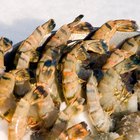
Tiger Prawns vs. Shrimp
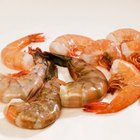
How to Cook Frozen Shrimps That Still ...

Jumbo Shrimp Nutritional Facts

How to Steam Shrimp in a Rice Cooker
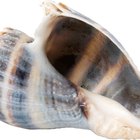
How to Remove Whelk Shells

Precautions With Fully Cooked Frozen ...

How to Cook Large Prawns
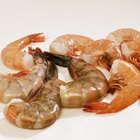
Can You Cook Shrimp Without Thawing ...

How to Cook Shrimp With Butter

How Can You Tell If Frozen Shrimps Are ...

Do I Peel Shrimp Before They Are Boiled?

Do You Have to Clean Octopus Tentacles ...

How to Steam Lobster & Shrimp

How Do Oysters Protect Themselves?

How Long Should Beef Liver Be Cooked?
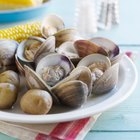
Types of Edible Clams

How to Remove Sand From Live Clams
References
Writer Bio
Lamar Grey has been writing about cooking and food culture since 2010. He has ghostwritten eight cookbooks. Grey entered the culinary industry in 2003 as a prep cook in a full-service restaurant. He subsequently served as a baker and head cook on three award-winning kitchen staffs.
Photo Credits
Jupiterimages/liquidlibrary/Getty Images